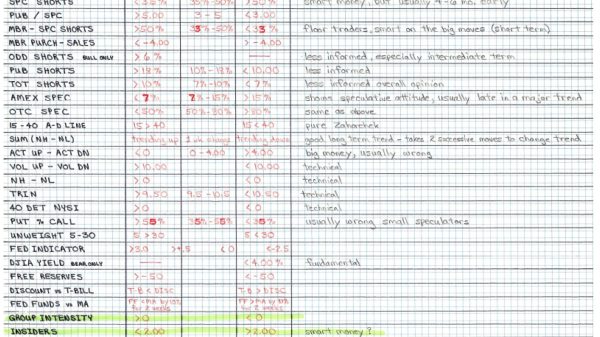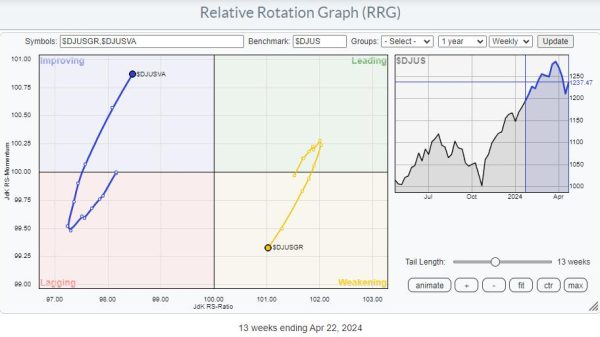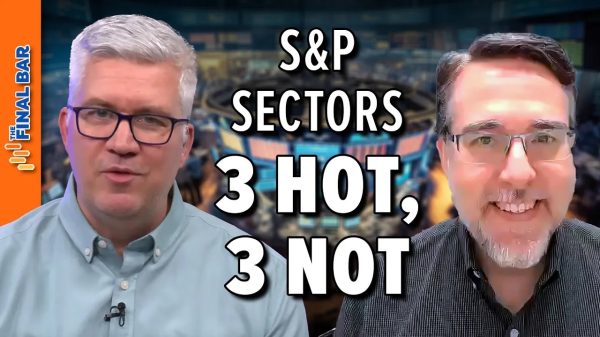This is a follow-up to a piece published a week ago on Nvidia’s (NVDA) strong run following its stellar earnings report. It follows NVDA’s price action, but from another angle, using the lesser-used Ichimoku Cloud indicator.
Revisiting NVDA’s Price Action
NVDA began outperforming its fellow semiconductor industry counterparts in the middle of January. Why? Its role in AI earned it a spotlight amid the ChatGPT and Bard craze that virtually dropped a disruption bomb on just about every industry.
Following a stellar earnings beat, NVDA went parabolic, pulling ahead of the pack, but at a trajectory that seemed a little too steep to be sustainable. The rest of the article advanced a few pullback scenarios, suggesting potential entry and exit levels for investors looking to “buy the dip.” This is what the chart looked like.
CHART 1: A DIP IN NVDA’S STOCK PRICE? NVDA looks ripe for a pullback, so keep an eye on this one. It could present a potential trading opportunity.Chart source: StockCharts.com. For educational purposes only.
NVDA is “dipping,” and if you’re monitoring a potential trade prospect, it helps to look at its movements again. It’s also an opportunity to view it from a different angle, just to get a different perspective.
Questions Concerning a Pullback
The main question concerning a pullback is whether it’s bound for a bounce or destined to drop. Simply put, what are the odds of it moving up or down?
The View From a Cloud
The Ichimoku Cloud indicator isn’t the simplest tool to use, but it does give us something unique:
The cloud itself, plotted 26 bars into the future, gives a future framework for anticipating support and resistance and anticipating the potential strength of a trend (based on the cloud’s thickness).The lagging indicator—current price action plotted back 26 bars—indicates the relative bullishness or bearishness of the current price action when viewed against “past” price action, the cloud itself, and the conversion and base lines.
Need a quick overview of Ichimoku Charts? Check out Chip Anderson’s YouTube video explaining the different components of the Ichimoku Cloud.
CHART 2: ICHIMOKU CLOUD INDICATOR. The MACD and Stochastic Oscillator are in overbought territory, and the Ichimoku Cloud indicator suggests the uptrend is likely to continue. Any turn in the lagging span could be an early indication of a reversal.Chart source: StockChartsACP. For educational purposes only.
NVDA seemed due for a technical “breather” (aka, pullback), considering the downward slant in the MACD and Stochastic Oscillator, the latter of which is turning down from a relative “overbought” range. But easing concerns regarding the banking sector, coupled with easing in the 10-Year US Treasury yields ($TNX), lifted the broader market, with large-cap technology stocks leading the way. Whatever technical pullback seemed impending just days ago has either been deferred or bypassed by bullish and fundamentally-driven sentiment.
The question at the time, and possibly in the near future, would be whether a decline in NVDA’s price poses a pullback scenario or a potential reversal. This is where the Ichimoku Cloud indicator could help.
Here are some points to consider:
Price is well above the cloud (aka, “kumo”) itself, and the thickening of the cloud adds to the bullishness of the bias. The cloud often serves as a range of support in an uptrend and resistance in a downtrend.Looking at the 26-day projection, there is a very thick range of support should prices decline into it. That price and the conversion line (blue) have crossed above the baseline (red) also adds another layer to bullish indication.The interesting thing to note here, however, is what happened on January 17. At that point in time, NVDA was recovering from a decline, and had yet to break above resistance at 187.87 (December 13, 2022). However, the lagging span (aka “chikou span”), plotted 26 periods back (December 7), had crossed above price, the cloud, conversion line, and baseline. Aside from serving as a lookback period to the then-current price, it also gave an early indication of the potential beginnings of a robust uptrend. And it’s continuing in that direction—for now, anyway.
The Bottom Line
Looking at NVDA’s price action using the previous article’s chart settings gave actionable reference points from which to base potential trades (entries and exits). But following the development of price action using the Ichimoku Cloud paints not only a bullish assessment of its potential trend and momentum strength, but also plots a wider range of potential support should a pullback occur. It also reveals an earlier and more aggressive entry point that might have been taken based on the indications of the lagging span back in January.
Disclaimer: This blog is for educational purposes only and should not be construed as financial advice. The ideas and strategies should never be used without first assessing your own personal and financial situation, or without consulting a financial professional.























